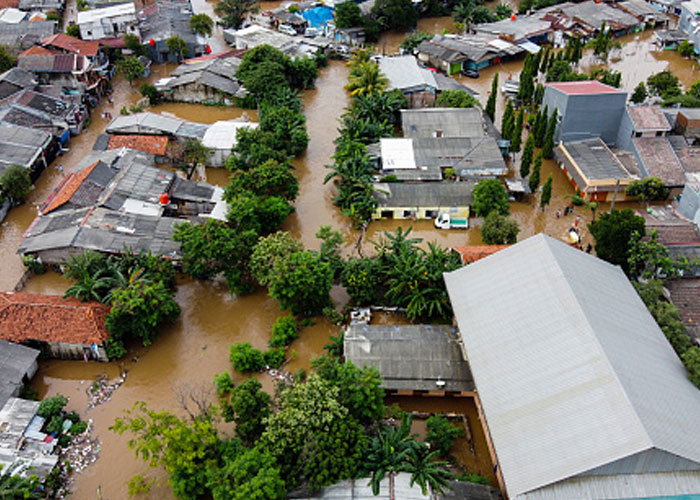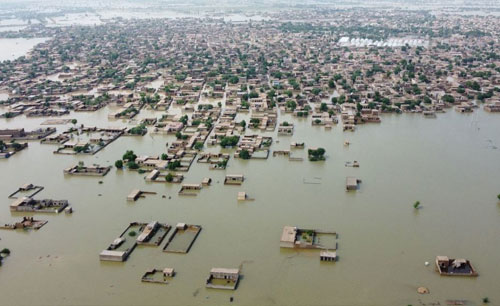The floods in Pakistan are one of the most devastating natural disasters in recent memory. The country has been impacted by up to three times its average annual rainfall, and the southern provinces have experienced five times as much. Experts say human-induced global warming is likely to intensify downpours in the future. Climate models predict a warmer world will result in more rainfall, and the country is warming faster than the global average.
Depending on the location of your home, you might have to purchase an STP to handle your sewage. Generally, residential buildings need at least one STP to treat sewage. Many STPs are located underground, making them difficult to maintain. Moreover, you may not be able to inspect them without hiring an expert. It is better to consult a professional if you have any doubts about the process.
Access issues for volunteers
Many volunteers in Pakistan's flood disaster relief efforts are encountering access issues. With many roads and bridges inundated, it is almost impossible for volunteers to reach flood victims. Many have had to swim in flood waters to get to the people they need to help. Many volunteers are delivering medicine packages and conduct medical check-ups.
While local government agencies deliver emergency relief and rescue operations to those most in need, volunteers have severe access challenges. The flooding has inundated many miles of roads and rendered some towns uninhabitable. As a result, the government has been unable to deploy helicopters to rescue survivors and has no place to pump water. The floods have displaced almost four million people in the province alone.

The floods in Pakistan have severely affected the country's infrastructure. In areas such as Sindh, many areas are completely flooded. Relief efforts and health facilities are hindered. Inaccessibility to affected areas has also led to a deterioration of the already weakened health system. The country's floods have been exacerbated by climate change.
Impacts of flooding on livelihoods

Floods are a frequent natural threat to Pakistan, and their severity varies geographically. The 2010 flood disaster, for example, affected over 20% of the country's land area and over 20 million people. This event ravaged infrastructure and livelihoods, causing billions of dollars in damages. It destroyed more than two million homes and more than two million hectares of standing crops and killed 1.2 million heads of livestock. As much as 13 million MT lost food crops.
The flooding affected household incomes significantly. Many households were forced to relocate, which lowered their ability to meet basic needs. Other negative coping strategies included rationing food, selling productive assets, and taking on debt. Increasing households' access to cash is essential to helping them meet their immediate food and fuel needs and strengthening their resilience to future shocks. Several methods of providing access to cash can help.
Floods in Pakistan have been one of the most severe humanitarian disasters in the past decade. The 2010 floods destroyed more than 1.6 million housing units, depleted 1.5 million livestock, and displaced over a million people, or 12 per cent of the population. Floods in 2011 and 2012 also devastated rural areas in Sindh and Balochistan. The impact on the population is significant, but the long-term impacts of flooding on the country's economy and social infrastructure are yet to be realized.
Impacts of flooding on public health
Flooding in Pakistan is affecting the country's public health, with experts warning of the spread of waterborne diseases and food shortages. In this Morning Brief, we'll look at the lingering effects of the flooding, Europe's emergency energy measures and Sweden's new leadership.
Pakistan's health infrastructure is already fragile, and flooding has only worsened the situation. Poor access to healthcare has meant that people in rural areas struggle to reach health centres. The World Health Organisation estimates that more than 1,400 health facilities have been damaged by flooding and that the biggest problem is a lack of health workers and essential medicines.
Despite the severe impact of flooding, WHO and other international organizations are working with local health authorities to assess and respond to the situation. The government has launched emergency measures and medical camps and is organizing air evacuation operations. It has also partnered with local health authorities to conduct health awareness sessions.
UNHCR is mobilizing resources to support local communities
The UN Refugee Agency (UNHCR) has mobilized resources to help flood-affected communities in Pakistan. The country has experienced extreme monsoon rains this summer. The early start of the monsoon is believed to be related to global warming.
More than 300,000 houses and livelihoods were damaged or destroyed in the floods. More than 2 million acres of land were affected, and 735,000 livestock died. In addition, communication and road networks were damaged by the flood waters. People displaced by the floods described traumatic experiences. They are in urgent need of clean drinking water and shelter.
The United States is providing substantial financial assistance to Pakistan's flood relief efforts. A recent visit by USAID Administrator Dr Rajiv Shah provided $50 million to help Pakistan recover. The money will come from the Central Emergency Response Fund (CER Fund), established by the UN in 2006 to address humanitarian emergencies. The UN Office for Coordination of Humanitarian Affairs will administer the fund and distribute it to humanitarian partners.







































Share Post